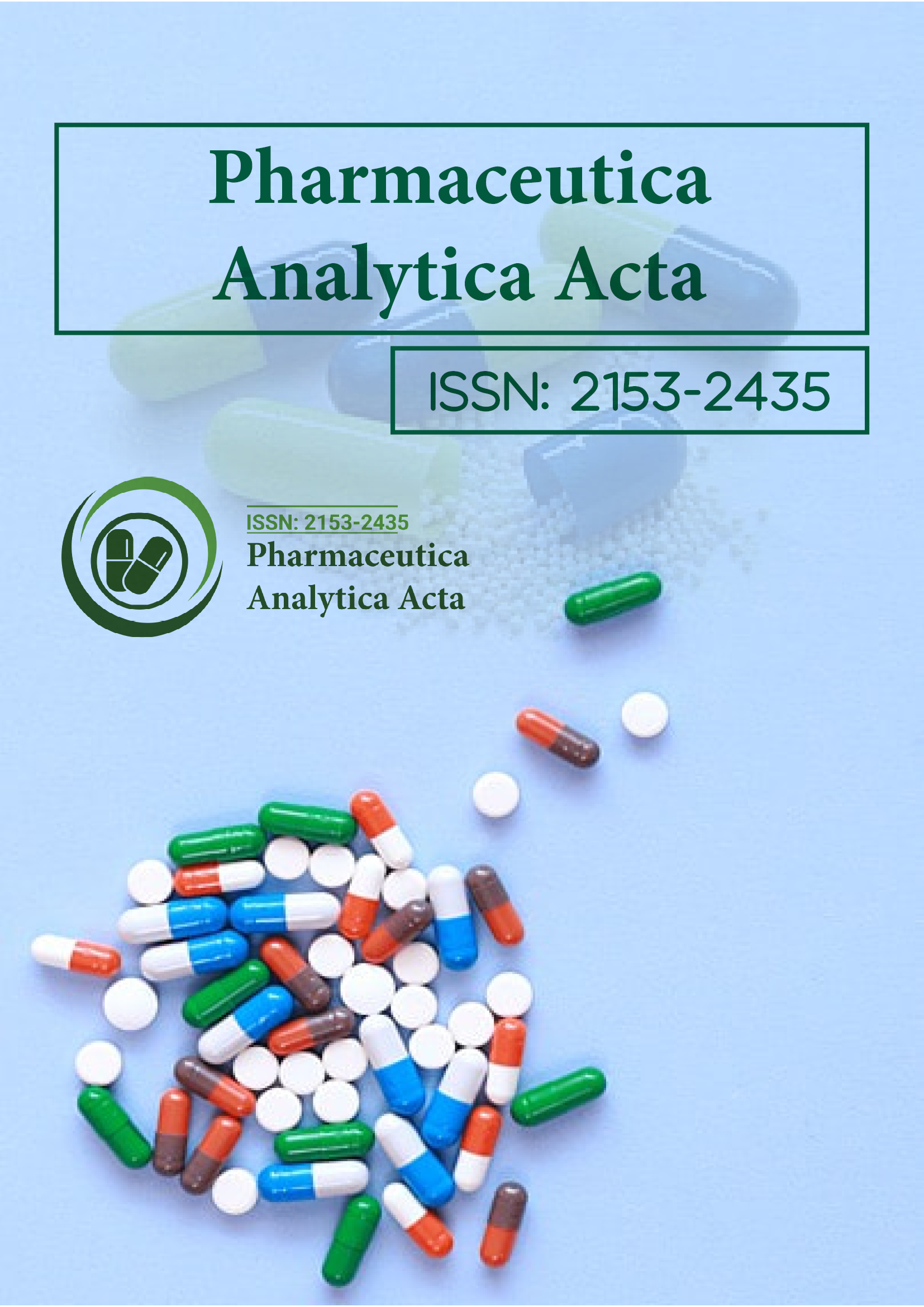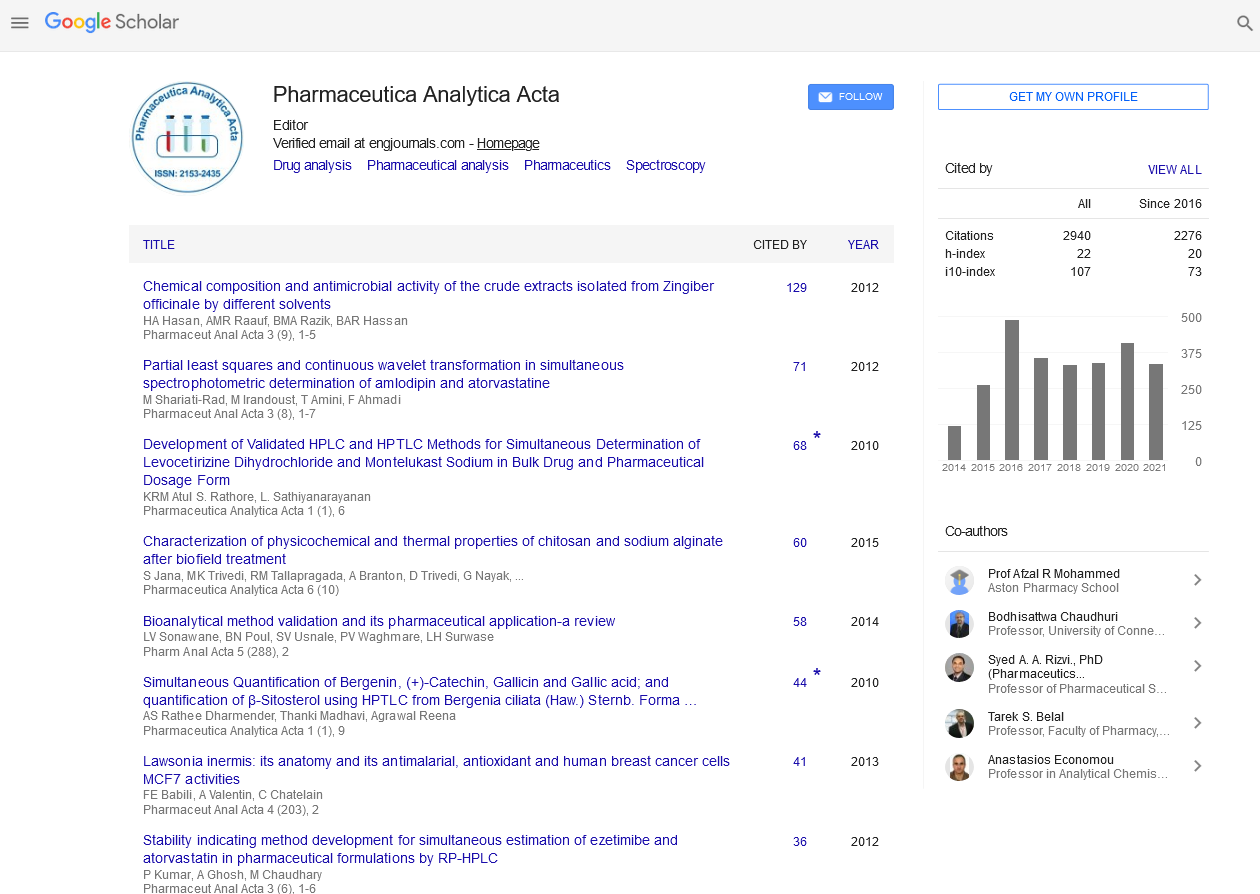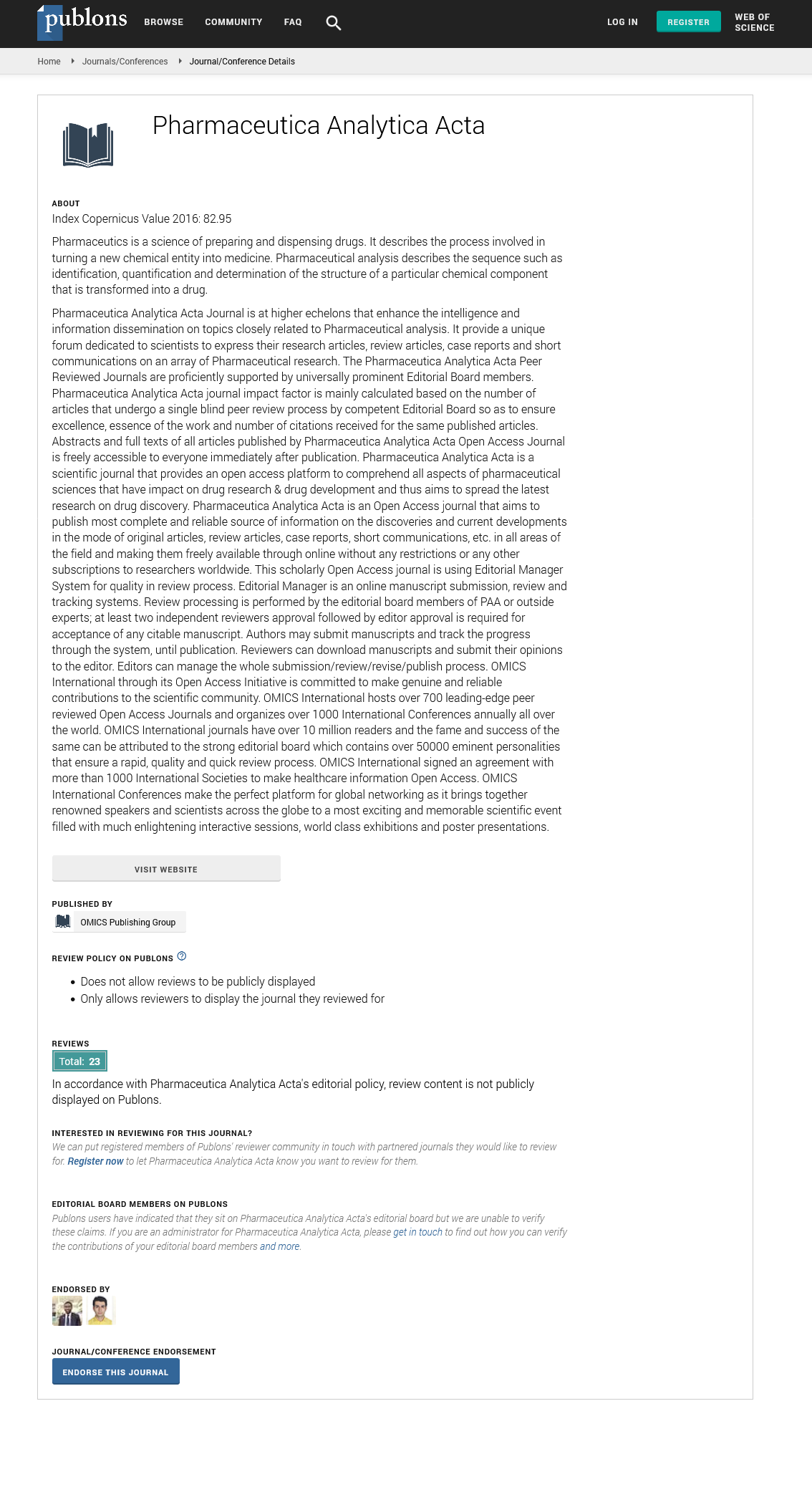Indexed In
- Open J Gate
- Genamics JournalSeek
- Academic Keys
- JournalTOCs
- The Global Impact Factor (GIF)
- China National Knowledge Infrastructure (CNKI)
- Ulrich's Periodicals Directory
- RefSeek
- Hamdard University
- EBSCO A-Z
- OCLC- WorldCat
- Publons
- Geneva Foundation for Medical Education and Research
- Euro Pub
- Google Scholar
Useful Links
Share This Page
Journal Flyer

Open Access Journals
- Agri and Aquaculture
- Biochemistry
- Bioinformatics & Systems Biology
- Business & Management
- Chemistry
- Clinical Sciences
- Engineering
- Food & Nutrition
- General Science
- Genetics & Molecular Biology
- Immunology & Microbiology
- Medical Sciences
- Neuroscience & Psychology
- Nursing & Health Care
- Pharmaceutical Sciences
A hierarchical strategy for mathematical modeling of drug dissolution and the importance of shearrate in determining in-vivo relevance of in-vitro dissolution
8th International Conference and Exhibition on Pharmaceutics & Novel Drug Delivery Systems
March 07-09, 2016 Madrid, Spain
James G Brasseur, Yanxing Wang, Deanna Mudie and Gregory E Amidon
University of Colorado, USA
Georgia Institute of Technology, USA
University of Michigan, USA
Posters & Accepted Abstracts: Pharm Anal Acta
Abstract:
We present an advanced strategy for practical mathematical predictions of dissolution from clouds of small drug particles with initial specified dose and particle size distribution within an impermeable container. The strategy is hierarchical in nature with an accurate first-principles model for diffusion-dominated dissolution at its core, systematically extensible to include alterations to dissolution from local hydrodynamic influences as well as form the confined nature of dissolution local to individual particles. With the model, we describe the sensitivities of the predictions to details of the initial size distribution. With appropriate nondimensionalization of model predictions, we show that dissolution can be categorized as: (1) well approximated by sink conditions, (2) dominantly influenced by confinement or (3) strongly impacted by a ‚??saturation singularity‚?Ě when dose concentration and solubility total are similar. With a mass transport analysis using computational fluid dynamics we have shown that local fluid shear rate is a dominant hydrodynamic effect that enhances dissolution rate over pure diffusion and that distinguishes in-vivo from in-vitro dissolution, particularly with respect to USP 2 in-vitro dissolution tests. We incorporate shear ‚??correlations‚?Ě into the hierarchical model structure and compare predictions with an experimental in-vitro study using a Couette cell in which shear rate could be precisely controlled. The in-vitro data were collected at shear rates consistent with in-vivo dissolution and with standard applications of the USP 2 apparatus. Model predictions and experimental data compare well and show strong hydrodynamic enhancement from shear that distinguish in-vivo from in-vitro dissolution.
Biography :
Email: James.Brasseur@Colorado.EDU


